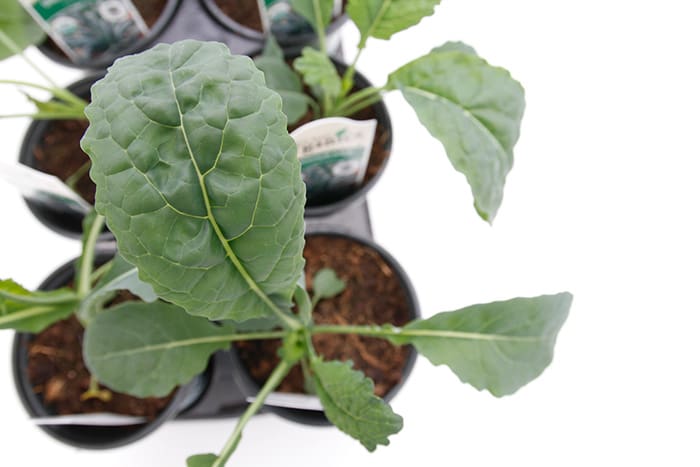The End of Summer Is Here
The end of summer announces itself with those much needed occasional breaks to the oppressive heat of July, a constant chorus of crickets, grasshoppers, and cicadas, and often sad looking backyard gardens full of overgrown weeds and tomatoes on their last leg. I’m here to remind you and your customers that it’s not time to say goodbye to your veggie gardens just yet!
While it might be too late to start your own seeds for starts for fall planting, we’ve got you covered with 1 QT Peace Tree Organics that are ready to be transplanted into the garden. They’ll keep you rolling in sweet, organic greens up until the last frost. We have a great selection of greens, herbs, and brassicas – cole crops that like cooler weather and will tolerate light frosts.
- Cauliflower – White, Cheddar (yellow), and Romanesco (hello fractals)
- Cabbages – Round Green Cabbage, Napa Cabbage
- Broccoli
- Kales- Red Curly, Green Curly, and Lacinato
- Lettuces – Salanova
- Beets – classic Bulls Blood
- Swiss Chard – Bright Lights
- Mustard – Red Giant
- Selection of 3.5″ herbs
Fall growing is easy!
There is no waiting for the ground to thaw or fields to dry out like there can be with springtime planting. Late summer is some of the best time to garden. Early morning and evening temperatures begin to ease and there is no shortage of life to keep you company while planting.
How to Plant Fall Veggie Starts
- Remove spent spring and summer crops – bolted lettuce, blighted tomatoes and the like and pull out weeds
- Layout your 1QT Peace Tree Organic starts
- Plant with organic fertilizer amendment or compost
- Water in thoroughly – make sure to water regularly so the plants aren’t shocked by the heat
- Look out for pests – consider covering transplants with agricultural fabric while they’re getting established to protect them
Now is also a great time to sow cover crops in any garden beds that you will not be filling with fall veggies. Cover crops aren’t just for farmers – home gardeners can build soil health and reduce weed pressure by using any mixture of cover crops. I like to seed winter kill cover crops that will protect my garden beds but are typically killed over winter so I don’t have to contend with them in the springtime. I mix rye with red clover or buckwheat. Learn more about cover cropping in the Basics of Cover Cropping by the Organic Growers School post.

Cool, and soon enough cold, weather makes fall vegetables taste even better. The first killing frost doesn’t have to mark the end of your kitchen garden. There are many ways to extend the life of your garden by insulating your cold tolerant crops.
- Cold Frames – There are many different designs, utilize unused old windows (be careful of chipping paint) to create built in cold frames you can use in the fall and spring. Handles and hinges make this format easy to vent on warmer days.
- Caterpillar Tunnels – all you need is a metal hoop or frame and some agricultural fabric. Make sure the fabric doesn’t touch the plants at all and secure the bases with stones or sandbags. Try to keep the fabric taut so you don’t have the ‘sail effect’ where the wind catches any slack.
- Bell Covers – think old time glass cloches or get creative and repurpose old bottles and containers
- Hoophouses and Greenhouses – if you want to go full on and commit!
Once you’ve planted your starts, be sure to keep a close eye on the weather forecast – looking out for overnight lows and daytime highs. You’ll need to adjust your plant coverage during a warm day or make sure you cover up if a cold night is coming. Weather apps are you and your garden’s new best friend!

Remember that gardening is a learning process and what works one year might not work the next. Turn your fall garden into a classroom for your kids stuck at home this year and learn alongside your harvests!

